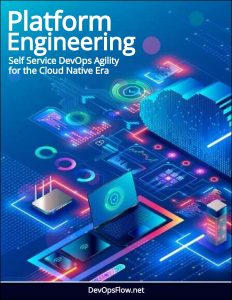Supercharging Business Velocity: The Game-Changing Impact of Platform Engineering Teams
The rise of platform engineering teams has emerged as a transformative force, enabling organizations to accelerate development, enhance operational resilience, and unlock innovation at scale.
 In today’s hyper-competitive digital landscape, businesses must move faster, scale smarter, and deliver value to customers with unprecedented efficiency.
In today’s hyper-competitive digital landscape, businesses must move faster, scale smarter, and deliver value to customers with unprecedented efficiency.
The rise of platform engineering teams has emerged as a transformative force, enabling organizations to accelerate development, enhance operational resilience, and unlock innovation at scale.
This article explores the pivotal role of platform engineering teams, their impact on business velocity, and how they are redefining the way modern enterprises operate.
What is Platform Engineering?
Platform engineering is the discipline of designing, building, and maintaining a robust, scalable, and developer-friendly platform that empowers development teams to deliver software efficiently. Unlike traditional IT operations, which focus on managing infrastructure, platform engineering takes a product-oriented approach, treating the platform as an internal product that serves developers as its primary customers.
A platform engineering team creates a cohesive ecosystem of tools, services, and workflows—often referred to as an Internal Developer Platform (IDP)—that abstracts away the complexities of infrastructure, compliance, and operational overhead. This allows developers to focus on writing code, delivering features, and solving customer problems rather than wrestling with tooling or environment configurations.
Key components of a platform engineering team’s output include:
- Self-service tools: CI/CD pipelines, observability dashboards, and deployment templates.
- Standardized workflows: Consistent processes for testing, deploying, and monitoring applications.
- Infrastructure abstraction: Cloud-agnostic or hybrid infrastructure management to simplify scaling and portability.
- Developer experience (DevEx): Intuitive interfaces, documentation, and automation to reduce cognitive load.
By centralizing and optimizing these capabilities, platform engineering teams act as force multipliers, enabling organizations to achieve greater agility and operational excellence.
The Business Case for Platform Engineering
In a 2023 Gartner report, it was estimated that by 2026, 80% of large enterprises will have adopted platform engineering practices to accelerate digital transformation.
This shift is driven by the tangible benefits that platform engineering delivers to businesses striving to stay ahead in a fast-moving market. Let’s explore how platform engineering supercharges business velocity across key dimensions.
1. Accelerating Time-to-Market
Speed is the currency of competitive advantage. Platform engineering teams streamline the software development lifecycle by providing pre-configured, self-service tools that eliminate bottlenecks. For example, a well-designed IDP can reduce the time it takes to provision environments, deploy code, or resolve incidents from days to minutes.
Consider a scenario where a development team needs to launch a new microservice. Without a platform, they might spend weeks configuring servers, setting up CI/CD pipelines, and navigating compliance requirements. A platform engineering team, however, delivers a pre-built pipeline and a self-service portal, enabling the team to deploy their service in hours. This acceleration directly translates to faster feature releases, quicker customer feedback loops, and a stronger market position.
Case Study: A global e-commerce company implemented an IDP that reduced its average feature deployment time from 10 days to 2 days. This 80% reduction in time-to-market allowed the company to outpace competitors during peak shopping seasons, driving a 15% increase in revenue.
2. Enhancing Developer Productivity
Developers are among the most valuable (and expensive) resources in any tech-driven organization. Yet, studies show that developers often spend 30-50% of their time on non-coding tasks like debugging infrastructure issues, configuring tools, or navigating fragmented workflows. Platform engineering teams alleviate this burden by creating a seamless developer experience.
By offering standardized templates, automated testing environments, and integrated observability tools, platform teams empower developers to focus on writing high-quality code. This not only boosts productivity but also improves job satisfaction, reducing turnover in a highly competitive talent market.
Statistic: According to the 2024 State of DevOps Report, organizations with mature platform engineering practices report a 50% increase in developer productivity and a 30% reduction in onboarding time for new engineers.
3. Improving Reliability and Scalability
In a world where downtime can cost millions—Amazon famously lost $66,240 per minute during a 2013 outage—reliability is non-negotiable. Platform engineering teams embed best practices like automated scaling, fault tolerance, and observability into the platform, ensuring applications are resilient and performant even under unpredictable loads.
For instance, a platform team might implement chaos engineering tools to proactively test system resilience or integrate real-time monitoring to detect anomalies before they escalate. This proactive approach minimizes outages, enhances customer trust, and allows businesses to scale confidently during traffic spikes.
Example: A fintech startup leveraged its platform engineering team to build a cloud-native platform with automated failover and horizontal scaling. During a viral marketing campaign, the platform handled a 10x surge in traffic without a single outage, cementing the company’s reputation for reliability.
4. Enabling Innovation at Scale
Innovation thrives when teams can experiment rapidly and iterate without fear of breaking things. Platform engineering teams create a safe and flexible environment for experimentation by providing guardrails like automated compliance checks, rollback mechanisms, and sandbox environments.
Moreover, by abstracting infrastructure complexity, platform teams free up developers to explore emerging technologies like AI, serverless computing, or edge computing. This democratization of innovation ensures that businesses can adapt to market shifts and customer demands with agility.
5. Reducing Costs Through Efficiency
While platform engineering requires upfront investment, the long-term cost savings are substantial. By standardizing tools and processes, platform teams eliminate duplicative efforts and reduce the need for ad-hoc infrastructure fixes. Automation further lowers operational costs by minimizing manual interventions.
For example, a platform team might consolidate disparate CI/CD tools into a single, optimized pipeline, reducing licensing costs and maintenance overhead. Similarly, infrastructure-as-code (IaC) practices enable efficient resource utilization, preventing over-provisioning in cloud environments.
Statistic: A 2024 Forrester study found that organizations with platform engineering teams reduced infrastructure costs by 20-30% while improving deployment frequency by 40%.
Building a High-Impact Platform Engineering Team
To realize these benefits, organizations must approach platform engineering strategically. Here are five key steps to building a high-impact platform engineering team:
- Adopt a Product Mindset: Treat the platform as a product, with developers as the primary customers. Conduct regular feedback sessions to understand pain points and iterate on the platform’s features.
- Hire Cross-Functional Talent: Assemble a team with expertise in software engineering, DevOps, cloud architecture, and UX design. This diversity ensures the platform is both technically robust and user-friendly.
- Invest in Automation: Prioritize automation for repetitive tasks like provisioning, testing, and monitoring. Tools like Terraform, Kubernetes, and ArgoCD can accelerate platform development.
- Foster Collaboration: Break down silos between platform engineers, developers, and operations teams. Encourage shared ownership of the platform through practices like Site Reliability Engineering (SRE).
- Measure Success: Define clear metrics to evaluate the platform’s impact, such as deployment frequency, mean time to recovery (MTTR), developer satisfaction, and cost savings.
Challenges and Considerations
While platform engineering offers immense value, it’s not without challenges. Organizations may face resistance to change, particularly in legacy environments with entrenched processes. Additionally, building a platform requires significant upfront investment in time, talent, and tools, which can strain budgets.
To overcome these hurdles, start small with a pilot project—such as automating a single CI/CD pipeline—and demonstrate quick wins to secure buy-in. Gradually expand the platform’s scope as trust and adoption grow. It’s also critical to align platform initiatives with business goals to ensure executive support.
The Future of Platform Engineering
As technology evolves, platform engineering will continue to shape the future of business agility. Emerging trends like AI-driven automation, GitOps, and multi-cloud platforms are poised to further enhance the capabilities of platform teams. Moreover, as organizations embrace distributed workforces, platform engineering will play a crucial role in enabling seamless collaboration across geographies.
By 2030, platform engineering is expected to become a foundational discipline for enterprises, much like DevOps is today. Companies that invest in platform engineering now will position themselves to outpace competitors, delight customers, and thrive in an era of relentless disruption.
Conclusion
Platform engineering teams are not just technical enablers—they are strategic catalysts for business success. By accelerating development, enhancing reliability, and fostering innovation, these teams empower organizations to move faster and smarter in a digital-first world. For leaders looking to supercharge their business velocity, investing in platform engineering is no longer optional—it’s a game-changer that will define the winners of tomorrow.



